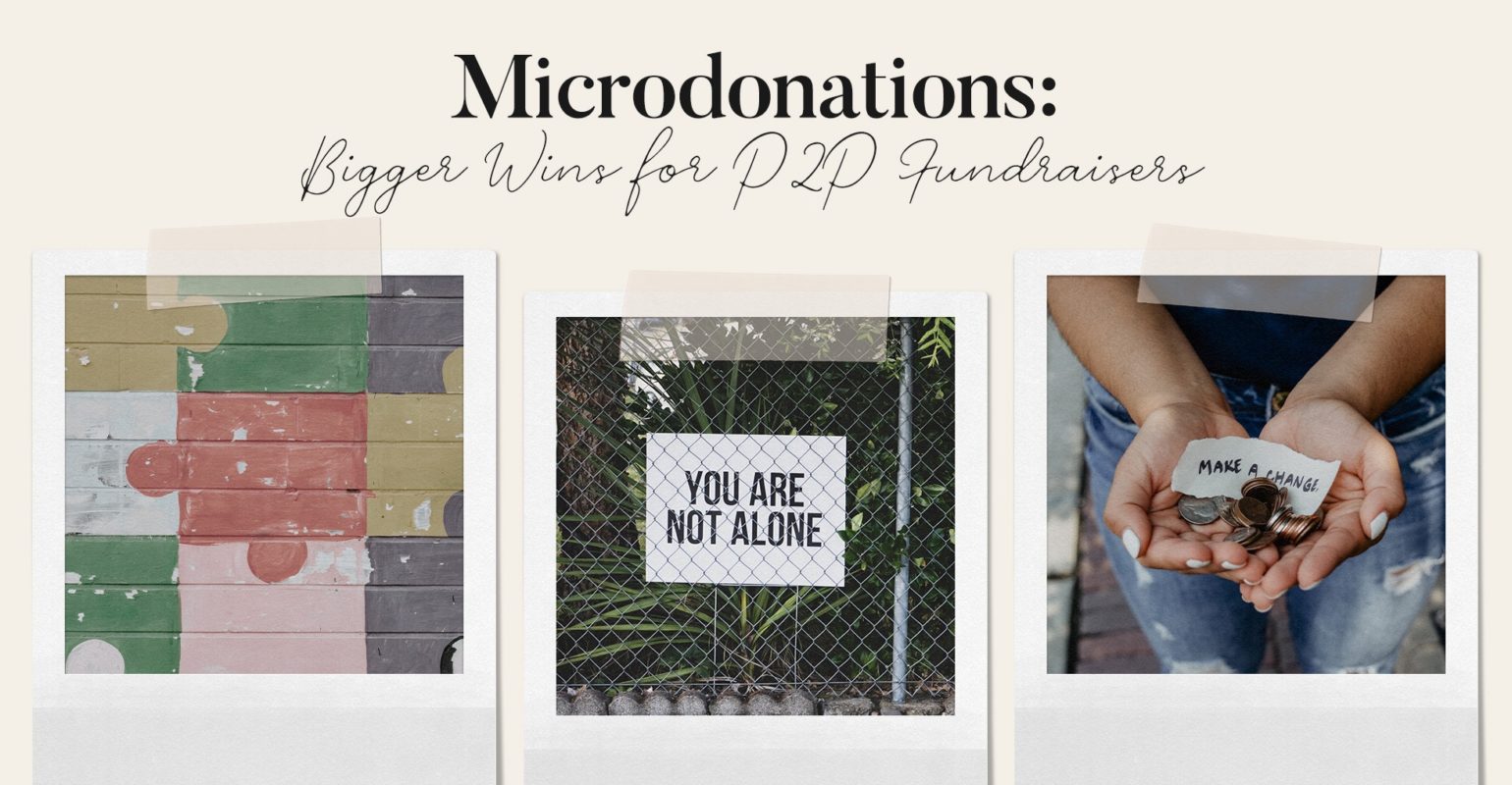Scenario: Last year, Middletown Animal Rescue joined Classy, enabling them to power individual, peer-to-peer (P2P) fundraising campaigns for the first time.
That holiday giving season, around a dozen of their local community volunteers launched personal, online fundraising campaigns to benefit the animal rescue.
Over the next few weeks, they shared their campaigns with their friends and family, ultimately raising an average of $250 per volunteer by year’s end.
But it was Sarah, a high school student, who broke the record.
By sharing her campaign and asking her social network to shop online through Giving Assistant, in addition to making direct donations towards her P2P campaign, this animal-lover raised over $300. That’s an extra $50 over the average amount raised per participant that would go to purchase food, shelter, and loving families for more of Middletown’s displaced pet population.
Sarah’s secret to her big fundraising win? Micro-donations.
What Are Micro Donations?
Microdonations are individual donations that average less than $10 each. They are small amounts that collectively “add up” in big, meaningful ways.
Not only do they provide nonprofits a viable (often significant) long-term financial boost, but they also empower communities, making it possible for more people to give and inspiring them to give together.
The Three Superpowers of Micro Donations
Superpower #1: Accessibility
While not everyone can make big, direct donations, almost anyone can “give small,” which enables, encourages, and empowers more people to give. Leading to…
Superpower #2: Engagement
One of the top reasons people say they don’t donate to nonprofits is because they feel like they can’t give enough for the donation to actually matter.
This perspective changes, however, when donors believe that others are making small donations along with them.
Countless Giving Assistant user interviews have shown us that these nonprofit supporters are more inspired to give when they know others are giving along with them, because they’re more confident those small donations they’re able to afford will, in fact, add up to something meaningful.
Superpower #3: Awareness
And what do you get when micro-givers believe that giving collectively is the key ingredient in making microdonations meaningful?
Sharing. Conversations. Communication. Increased awareness of your cause. Nonprofits’ giving communities—and their action communities—grow, as more people feel empowered by their giving, regardless of the size of those gifts.
And when it comes to microdonations, the more the merrier.
Putting it Together: P2P Fundraising, Classy, and Giving Assistant
Giving Assistant is just one tool you have in your arsenal that makes it easier for your P2P campaigners to capture those microdonations and boost their fundraising, engagement, and awareness efforts for you.
Even more importantly, while your nonprofit’s bottom line undoubtedly benefits from the fundraising boost these microdonations provide, it’s also empowering for your campaigners. The more they raise, the more proud and confident they feel. And the more confident they feel, the more they’re inspired to help lead your mission within their communities.
Syncing Classy and Giving Assistant
For Classy-connected nonprofits, you’ll be glad to know that Giving Assistant syncs seamlessly with Classy, so even your personal, independent fundraisers can take advantage of it, just like your organization does.
Once set up, your campaigners can invite their friends and family to contribute to their fundraiser by joining Giving Assistant, shopping, and making their cash back microdonations, in addition to continuing to make their direct donations—an incredibly easy ask for your campaigners.
On average, P2P fundraisers see as much as a 20% boost in donations when they invite their communities to use Giving Assistant, in addition to contributing their normal, direct donations.
Sync your Classy and Giving Assistant accounts, and start helping your P2P campaigners capture those fundraiser-boosting, cash back micro donations.

